Article Critique: The Effect of Motivation on Employee Productivity
VerifiedAdded on 2020/06/03
|7
|2013
|43
Report
AI Summary
This report presents a critical analysis of an article examining the effect of motivation techniques used by managers to increase worker productivity. The critique focuses on the strengths and weaknesses of the article, including the study's methodology, which involved questionnaires and statistical analysis. The report highlights the article's limitations, such as its focus on the textile industry, and suggests improvements, such as incorporating broader contexts and secondary data. The analysis also compares the article's findings with other academic research, discussing various motivational theories and their applications. The conclusion emphasizes the importance of motivational techniques in achieving organizational objectives while acknowledging the article's specific industry focus and limited scope. The report includes a comprehensive list of references used for the critical analysis.
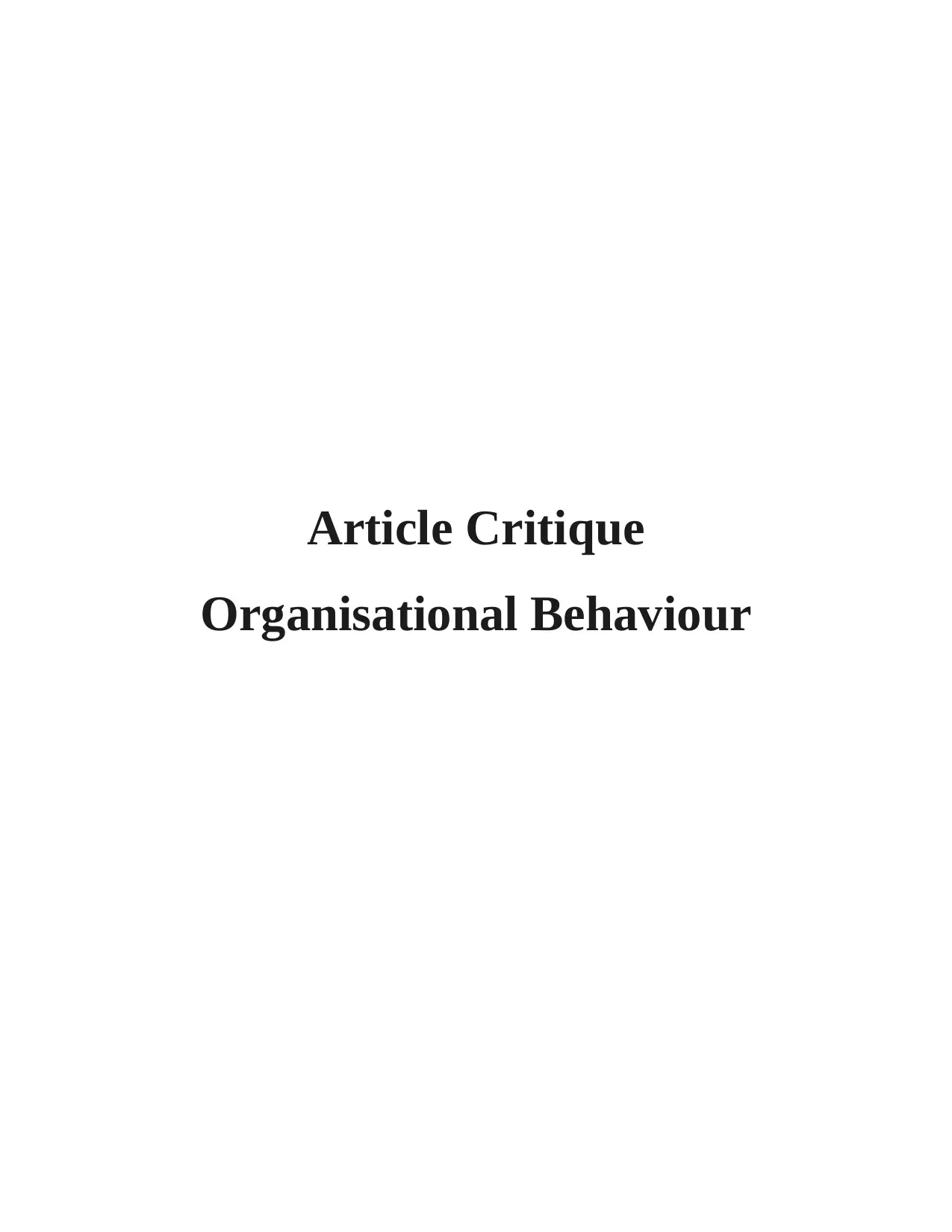
Article Critique
Organisational Behaviour
Organisational Behaviour
Paraphrase This Document
Need a fresh take? Get an instant paraphrase of this document with our AI Paraphraser
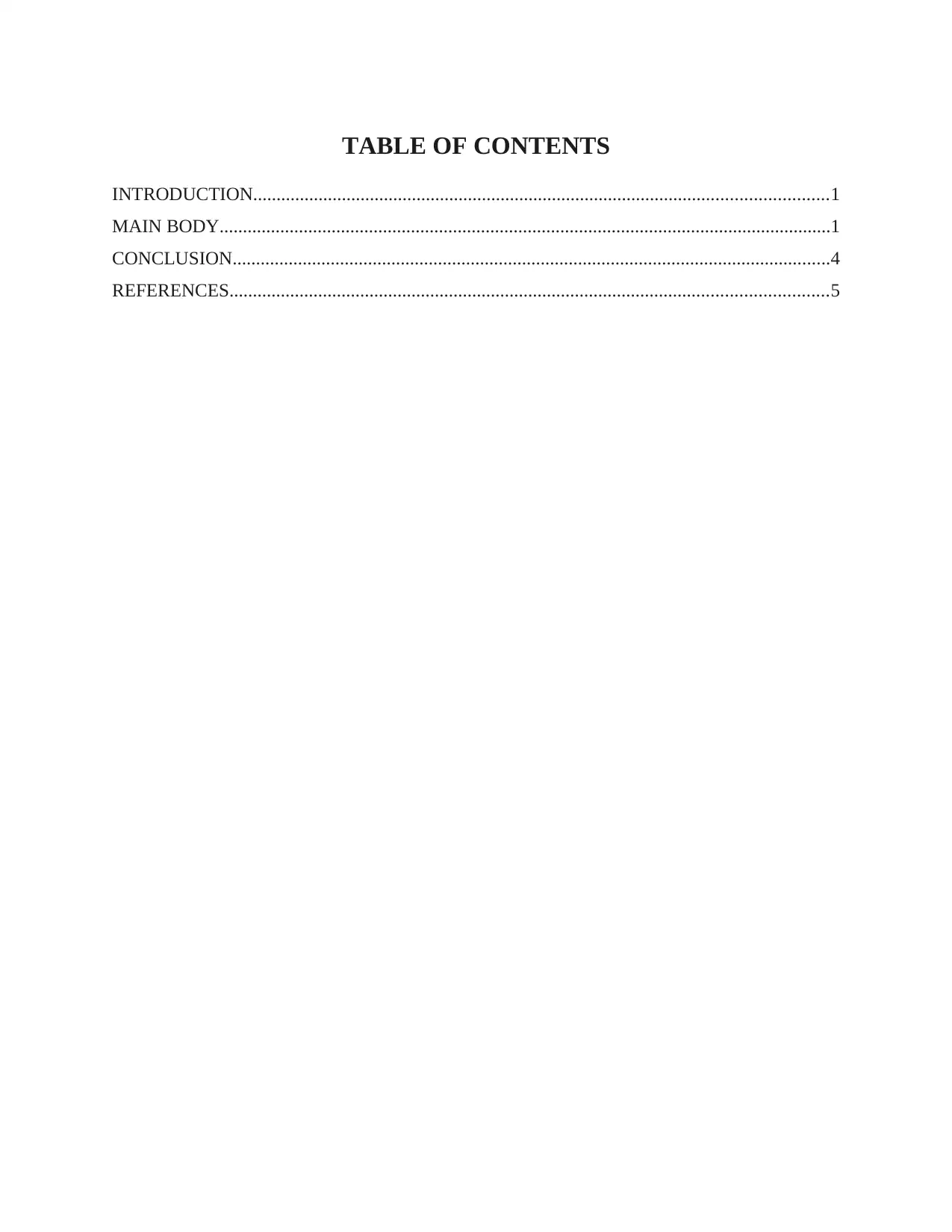
TABLE OF CONTENTS
INTRODUCTION...........................................................................................................................1
MAIN BODY...................................................................................................................................1
CONCLUSION................................................................................................................................4
REFERENCES................................................................................................................................5
INTRODUCTION...........................................................................................................................1
MAIN BODY...................................................................................................................................1
CONCLUSION................................................................................................................................4
REFERENCES................................................................................................................................5
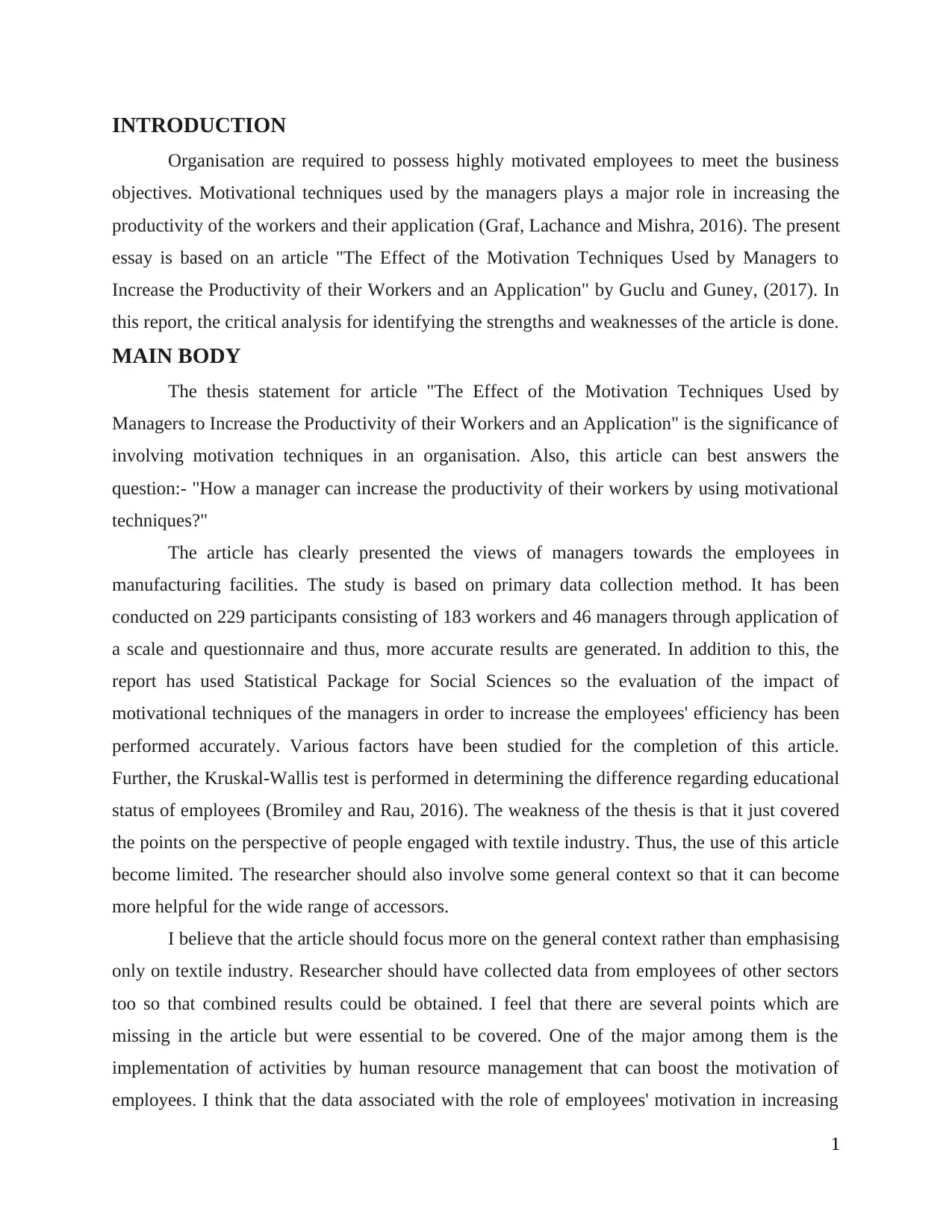
INTRODUCTION
Organisation are required to possess highly motivated employees to meet the business
objectives. Motivational techniques used by the managers plays a major role in increasing the
productivity of the workers and their application (Graf, Lachance and Mishra, 2016). The present
essay is based on an article "The Effect of the Motivation Techniques Used by Managers to
Increase the Productivity of their Workers and an Application" by Guclu and Guney, (2017). In
this report, the critical analysis for identifying the strengths and weaknesses of the article is done.
MAIN BODY
The thesis statement for article "The Effect of the Motivation Techniques Used by
Managers to Increase the Productivity of their Workers and an Application" is the significance of
involving motivation techniques in an organisation. Also, this article can best answers the
question:- "How a manager can increase the productivity of their workers by using motivational
techniques?"
The article has clearly presented the views of managers towards the employees in
manufacturing facilities. The study is based on primary data collection method. It has been
conducted on 229 participants consisting of 183 workers and 46 managers through application of
a scale and questionnaire and thus, more accurate results are generated. In addition to this, the
report has used Statistical Package for Social Sciences so the evaluation of the impact of
motivational techniques of the managers in order to increase the employees' efficiency has been
performed accurately. Various factors have been studied for the completion of this article.
Further, the Kruskal-Wallis test is performed in determining the difference regarding educational
status of employees (Bromiley and Rau, 2016). The weakness of the thesis is that it just covered
the points on the perspective of people engaged with textile industry. Thus, the use of this article
become limited. The researcher should also involve some general context so that it can become
more helpful for the wide range of accessors.
I believe that the article should focus more on the general context rather than emphasising
only on textile industry. Researcher should have collected data from employees of other sectors
too so that combined results could be obtained. I feel that there are several points which are
missing in the article but were essential to be covered. One of the major among them is the
implementation of activities by human resource management that can boost the motivation of
employees. I think that the data associated with the role of employees' motivation in increasing
1
Organisation are required to possess highly motivated employees to meet the business
objectives. Motivational techniques used by the managers plays a major role in increasing the
productivity of the workers and their application (Graf, Lachance and Mishra, 2016). The present
essay is based on an article "The Effect of the Motivation Techniques Used by Managers to
Increase the Productivity of their Workers and an Application" by Guclu and Guney, (2017). In
this report, the critical analysis for identifying the strengths and weaknesses of the article is done.
MAIN BODY
The thesis statement for article "The Effect of the Motivation Techniques Used by
Managers to Increase the Productivity of their Workers and an Application" is the significance of
involving motivation techniques in an organisation. Also, this article can best answers the
question:- "How a manager can increase the productivity of their workers by using motivational
techniques?"
The article has clearly presented the views of managers towards the employees in
manufacturing facilities. The study is based on primary data collection method. It has been
conducted on 229 participants consisting of 183 workers and 46 managers through application of
a scale and questionnaire and thus, more accurate results are generated. In addition to this, the
report has used Statistical Package for Social Sciences so the evaluation of the impact of
motivational techniques of the managers in order to increase the employees' efficiency has been
performed accurately. Various factors have been studied for the completion of this article.
Further, the Kruskal-Wallis test is performed in determining the difference regarding educational
status of employees (Bromiley and Rau, 2016). The weakness of the thesis is that it just covered
the points on the perspective of people engaged with textile industry. Thus, the use of this article
become limited. The researcher should also involve some general context so that it can become
more helpful for the wide range of accessors.
I believe that the article should focus more on the general context rather than emphasising
only on textile industry. Researcher should have collected data from employees of other sectors
too so that combined results could be obtained. I feel that there are several points which are
missing in the article but were essential to be covered. One of the major among them is the
implementation of activities by human resource management that can boost the motivation of
employees. I think that the data associated with the role of employees' motivation in increasing
1
⊘ This is a preview!⊘
Do you want full access?
Subscribe today to unlock all pages.

Trusted by 1+ million students worldwide
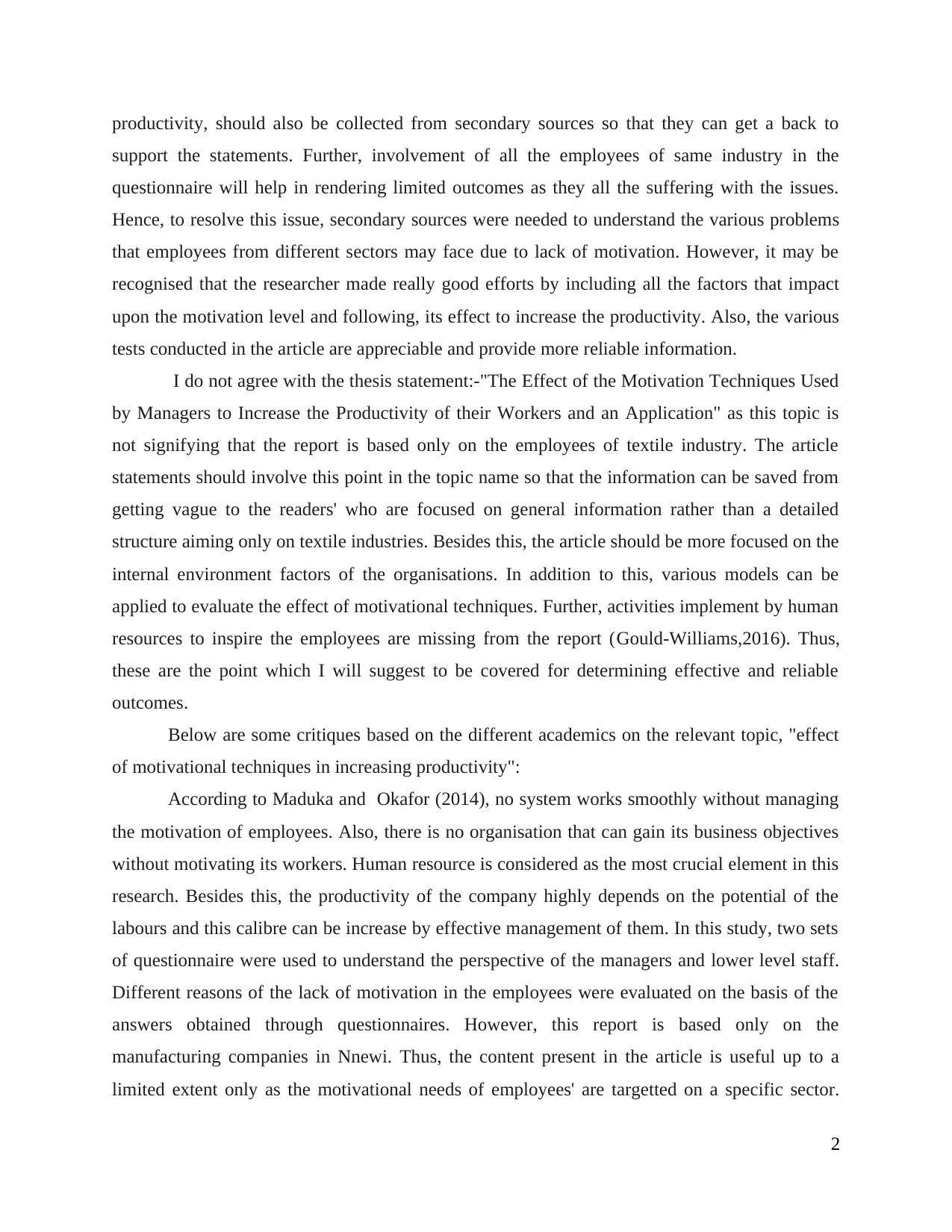
productivity, should also be collected from secondary sources so that they can get a back to
support the statements. Further, involvement of all the employees of same industry in the
questionnaire will help in rendering limited outcomes as they all the suffering with the issues.
Hence, to resolve this issue, secondary sources were needed to understand the various problems
that employees from different sectors may face due to lack of motivation. However, it may be
recognised that the researcher made really good efforts by including all the factors that impact
upon the motivation level and following, its effect to increase the productivity. Also, the various
tests conducted in the article are appreciable and provide more reliable information.
I do not agree with the thesis statement:-"The Effect of the Motivation Techniques Used
by Managers to Increase the Productivity of their Workers and an Application" as this topic is
not signifying that the report is based only on the employees of textile industry. The article
statements should involve this point in the topic name so that the information can be saved from
getting vague to the readers' who are focused on general information rather than a detailed
structure aiming only on textile industries. Besides this, the article should be more focused on the
internal environment factors of the organisations. In addition to this, various models can be
applied to evaluate the effect of motivational techniques. Further, activities implement by human
resources to inspire the employees are missing from the report (Gould-Williams,2016). Thus,
these are the point which I will suggest to be covered for determining effective and reliable
outcomes.
Below are some critiques based on the different academics on the relevant topic, "effect
of motivational techniques in increasing productivity":
According to Maduka and Okafor (2014), no system works smoothly without managing
the motivation of employees. Also, there is no organisation that can gain its business objectives
without motivating its workers. Human resource is considered as the most crucial element in this
research. Besides this, the productivity of the company highly depends on the potential of the
labours and this calibre can be increase by effective management of them. In this study, two sets
of questionnaire were used to understand the perspective of the managers and lower level staff.
Different reasons of the lack of motivation in the employees were evaluated on the basis of the
answers obtained through questionnaires. However, this report is based only on the
manufacturing companies in Nnewi. Thus, the content present in the article is useful up to a
limited extent only as the motivational needs of employees' are targetted on a specific sector.
2
support the statements. Further, involvement of all the employees of same industry in the
questionnaire will help in rendering limited outcomes as they all the suffering with the issues.
Hence, to resolve this issue, secondary sources were needed to understand the various problems
that employees from different sectors may face due to lack of motivation. However, it may be
recognised that the researcher made really good efforts by including all the factors that impact
upon the motivation level and following, its effect to increase the productivity. Also, the various
tests conducted in the article are appreciable and provide more reliable information.
I do not agree with the thesis statement:-"The Effect of the Motivation Techniques Used
by Managers to Increase the Productivity of their Workers and an Application" as this topic is
not signifying that the report is based only on the employees of textile industry. The article
statements should involve this point in the topic name so that the information can be saved from
getting vague to the readers' who are focused on general information rather than a detailed
structure aiming only on textile industries. Besides this, the article should be more focused on the
internal environment factors of the organisations. In addition to this, various models can be
applied to evaluate the effect of motivational techniques. Further, activities implement by human
resources to inspire the employees are missing from the report (Gould-Williams,2016). Thus,
these are the point which I will suggest to be covered for determining effective and reliable
outcomes.
Below are some critiques based on the different academics on the relevant topic, "effect
of motivational techniques in increasing productivity":
According to Maduka and Okafor (2014), no system works smoothly without managing
the motivation of employees. Also, there is no organisation that can gain its business objectives
without motivating its workers. Human resource is considered as the most crucial element in this
research. Besides this, the productivity of the company highly depends on the potential of the
labours and this calibre can be increase by effective management of them. In this study, two sets
of questionnaire were used to understand the perspective of the managers and lower level staff.
Different reasons of the lack of motivation in the employees were evaluated on the basis of the
answers obtained through questionnaires. However, this report is based only on the
manufacturing companies in Nnewi. Thus, the content present in the article is useful up to a
limited extent only as the motivational needs of employees' are targetted on a specific sector.
2
Paraphrase This Document
Need a fresh take? Get an instant paraphrase of this document with our AI Paraphraser
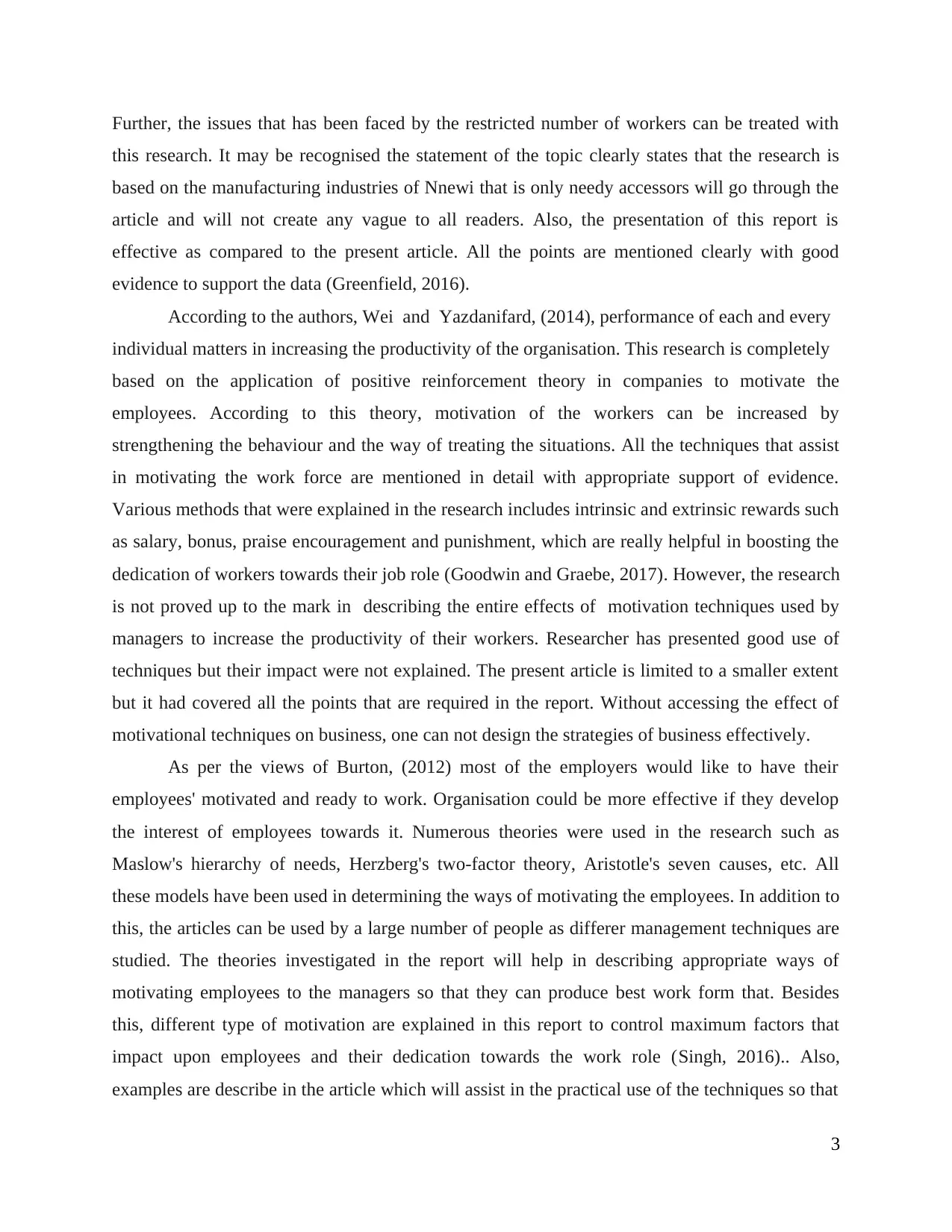
Further, the issues that has been faced by the restricted number of workers can be treated with
this research. It may be recognised the statement of the topic clearly states that the research is
based on the manufacturing industries of Nnewi that is only needy accessors will go through the
article and will not create any vague to all readers. Also, the presentation of this report is
effective as compared to the present article. All the points are mentioned clearly with good
evidence to support the data (Greenfield, 2016).
According to the authors, Wei and Yazdanifard, (2014), performance of each and every
individual matters in increasing the productivity of the organisation. This research is completely
based on the application of positive reinforcement theory in companies to motivate the
employees. According to this theory, motivation of the workers can be increased by
strengthening the behaviour and the way of treating the situations. All the techniques that assist
in motivating the work force are mentioned in detail with appropriate support of evidence.
Various methods that were explained in the research includes intrinsic and extrinsic rewards such
as salary, bonus, praise encouragement and punishment, which are really helpful in boosting the
dedication of workers towards their job role (Goodwin and Graebe, 2017). However, the research
is not proved up to the mark in describing the entire effects of motivation techniques used by
managers to increase the productivity of their workers. Researcher has presented good use of
techniques but their impact were not explained. The present article is limited to a smaller extent
but it had covered all the points that are required in the report. Without accessing the effect of
motivational techniques on business, one can not design the strategies of business effectively.
As per the views of Burton, (2012) most of the employers would like to have their
employees' motivated and ready to work. Organisation could be more effective if they develop
the interest of employees towards it. Numerous theories were used in the research such as
Maslow's hierarchy of needs, Herzberg's two-factor theory, Aristotle's seven causes, etc. All
these models have been used in determining the ways of motivating the employees. In addition to
this, the articles can be used by a large number of people as differer management techniques are
studied. The theories investigated in the report will help in describing appropriate ways of
motivating employees to the managers so that they can produce best work form that. Besides
this, different type of motivation are explained in this report to control maximum factors that
impact upon employees and their dedication towards the work role (Singh, 2016).. Also,
examples are describe in the article which will assist in the practical use of the techniques so that
3
this research. It may be recognised the statement of the topic clearly states that the research is
based on the manufacturing industries of Nnewi that is only needy accessors will go through the
article and will not create any vague to all readers. Also, the presentation of this report is
effective as compared to the present article. All the points are mentioned clearly with good
evidence to support the data (Greenfield, 2016).
According to the authors, Wei and Yazdanifard, (2014), performance of each and every
individual matters in increasing the productivity of the organisation. This research is completely
based on the application of positive reinforcement theory in companies to motivate the
employees. According to this theory, motivation of the workers can be increased by
strengthening the behaviour and the way of treating the situations. All the techniques that assist
in motivating the work force are mentioned in detail with appropriate support of evidence.
Various methods that were explained in the research includes intrinsic and extrinsic rewards such
as salary, bonus, praise encouragement and punishment, which are really helpful in boosting the
dedication of workers towards their job role (Goodwin and Graebe, 2017). However, the research
is not proved up to the mark in describing the entire effects of motivation techniques used by
managers to increase the productivity of their workers. Researcher has presented good use of
techniques but their impact were not explained. The present article is limited to a smaller extent
but it had covered all the points that are required in the report. Without accessing the effect of
motivational techniques on business, one can not design the strategies of business effectively.
As per the views of Burton, (2012) most of the employers would like to have their
employees' motivated and ready to work. Organisation could be more effective if they develop
the interest of employees towards it. Numerous theories were used in the research such as
Maslow's hierarchy of needs, Herzberg's two-factor theory, Aristotle's seven causes, etc. All
these models have been used in determining the ways of motivating the employees. In addition to
this, the articles can be used by a large number of people as differer management techniques are
studied. The theories investigated in the report will help in describing appropriate ways of
motivating employees to the managers so that they can produce best work form that. Besides
this, different type of motivation are explained in this report to control maximum factors that
impact upon employees and their dedication towards the work role (Singh, 2016).. Also,
examples are describe in the article which will assist in the practical use of the techniques so that
3
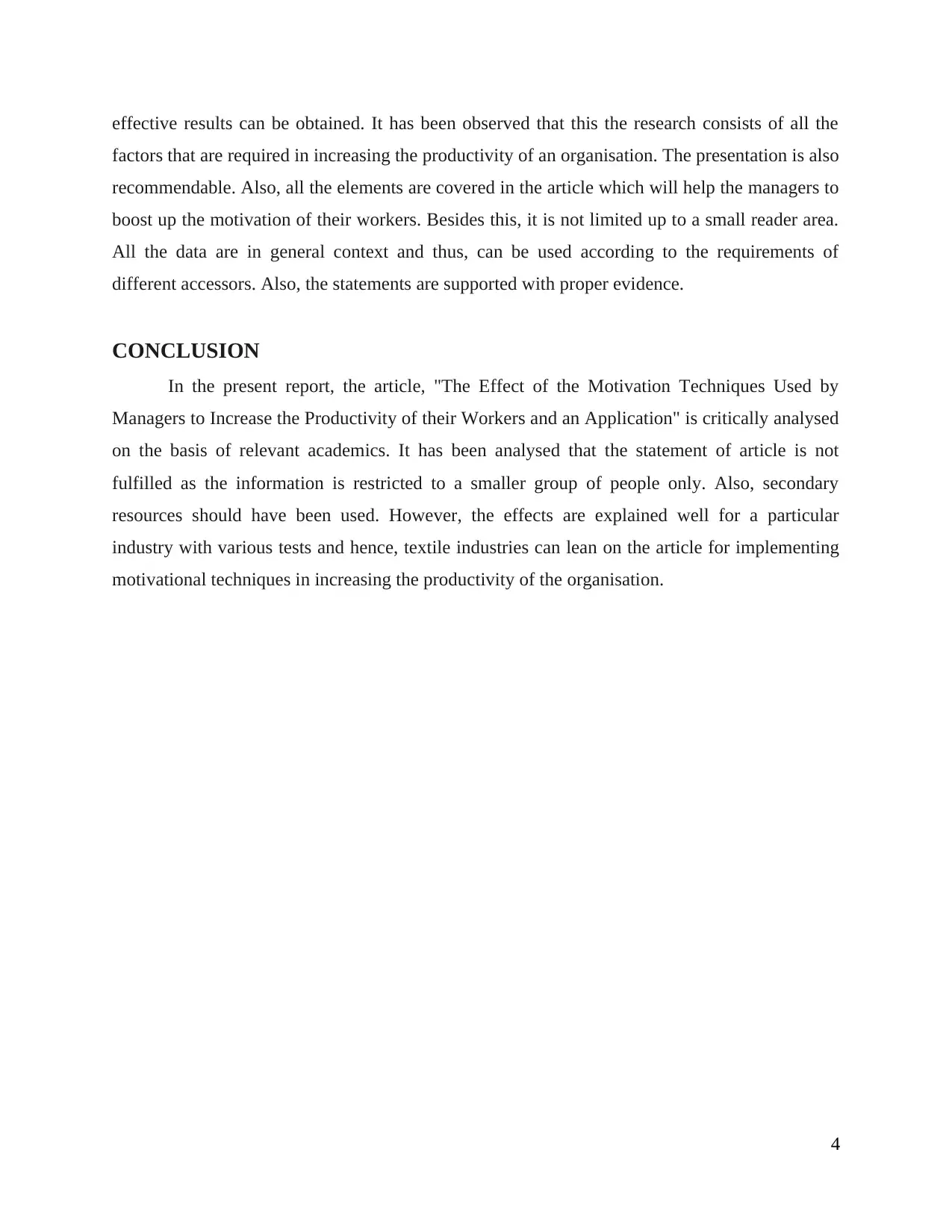
effective results can be obtained. It has been observed that this the research consists of all the
factors that are required in increasing the productivity of an organisation. The presentation is also
recommendable. Also, all the elements are covered in the article which will help the managers to
boost up the motivation of their workers. Besides this, it is not limited up to a small reader area.
All the data are in general context and thus, can be used according to the requirements of
different accessors. Also, the statements are supported with proper evidence.
CONCLUSION
In the present report, the article, "The Effect of the Motivation Techniques Used by
Managers to Increase the Productivity of their Workers and an Application" is critically analysed
on the basis of relevant academics. It has been analysed that the statement of article is not
fulfilled as the information is restricted to a smaller group of people only. Also, secondary
resources should have been used. However, the effects are explained well for a particular
industry with various tests and hence, textile industries can lean on the article for implementing
motivational techniques in increasing the productivity of the organisation.
4
factors that are required in increasing the productivity of an organisation. The presentation is also
recommendable. Also, all the elements are covered in the article which will help the managers to
boost up the motivation of their workers. Besides this, it is not limited up to a small reader area.
All the data are in general context and thus, can be used according to the requirements of
different accessors. Also, the statements are supported with proper evidence.
CONCLUSION
In the present report, the article, "The Effect of the Motivation Techniques Used by
Managers to Increase the Productivity of their Workers and an Application" is critically analysed
on the basis of relevant academics. It has been analysed that the statement of article is not
fulfilled as the information is restricted to a smaller group of people only. Also, secondary
resources should have been used. However, the effects are explained well for a particular
industry with various tests and hence, textile industries can lean on the article for implementing
motivational techniques in increasing the productivity of the organisation.
4
⊘ This is a preview!⊘
Do you want full access?
Subscribe today to unlock all pages.

Trusted by 1+ million students worldwide
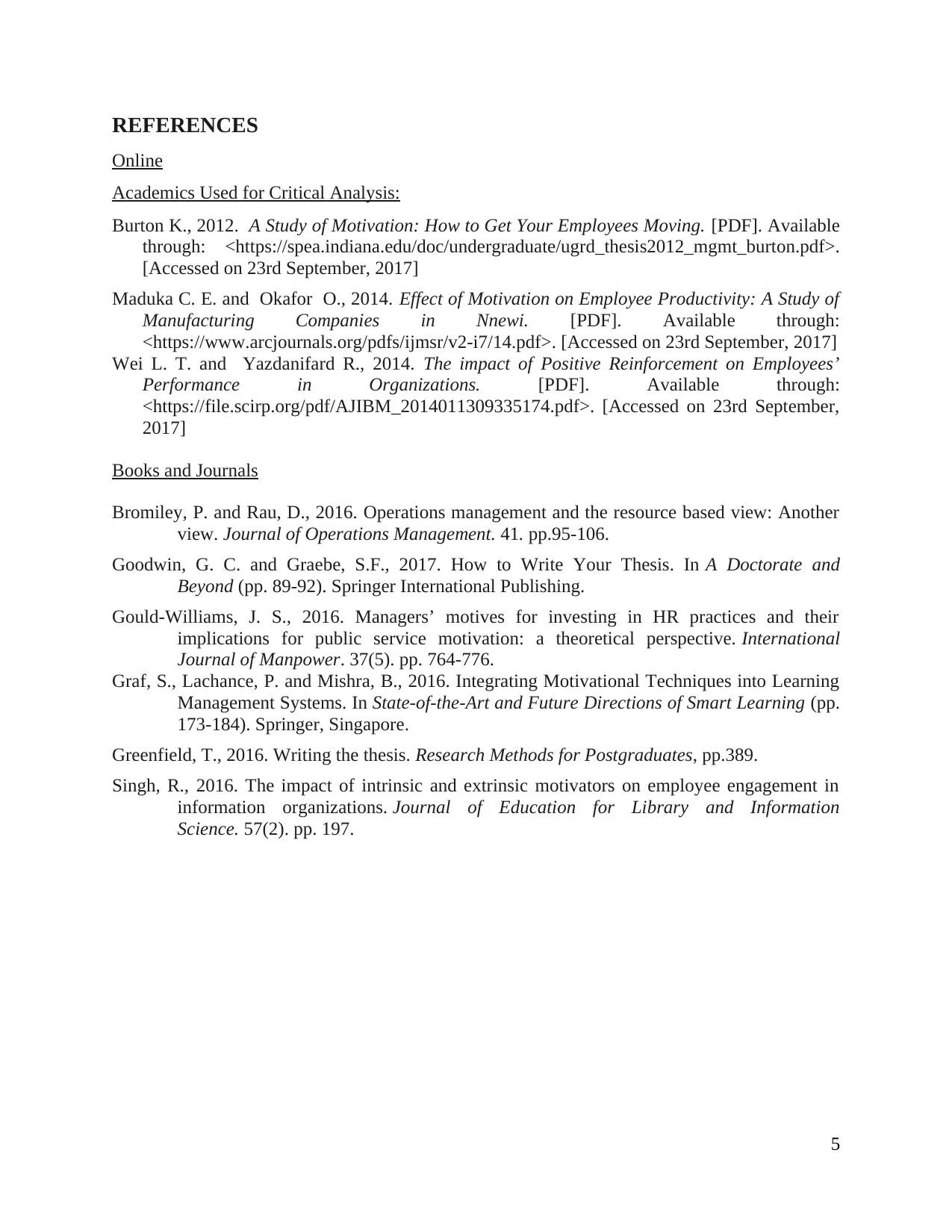
REFERENCES
Online
Academics Used for Critical Analysis:
Burton K., 2012. A Study of Motivation: How to Get Your Employees Moving. [PDF]. Available
through: <https://spea.indiana.edu/doc/undergraduate/ugrd_thesis2012_mgmt_burton.pdf>.
[Accessed on 23rd September, 2017]
Maduka C. E. and Okafor O., 2014. Effect of Motivation on Employee Productivity: A Study of
Manufacturing Companies in Nnewi. [PDF]. Available through:
<https://www.arcjournals.org/pdfs/ijmsr/v2-i7/14.pdf>. [Accessed on 23rd September, 2017]
Wei L. T. and Yazdanifard R., 2014. The impact of Positive Reinforcement on Employees’
Performance in Organizations. [PDF]. Available through:
<https://file.scirp.org/pdf/AJIBM_2014011309335174.pdf>. [Accessed on 23rd September,
2017]
Books and Journals
Bromiley, P. and Rau, D., 2016. Operations management and the resource based view: Another
view. Journal of Operations Management. 41. pp.95-106.
Goodwin, G. C. and Graebe, S.F., 2017. How to Write Your Thesis. In A Doctorate and
Beyond (pp. 89-92). Springer International Publishing.
Gould-Williams, J. S., 2016. Managers’ motives for investing in HR practices and their
implications for public service motivation: a theoretical perspective. International
Journal of Manpower. 37(5). pp. 764-776.
Graf, S., Lachance, P. and Mishra, B., 2016. Integrating Motivational Techniques into Learning
Management Systems. In State-of-the-Art and Future Directions of Smart Learning (pp.
173-184). Springer, Singapore.
Greenfield, T., 2016. Writing the thesis. Research Methods for Postgraduates, pp.389.
Singh, R., 2016. The impact of intrinsic and extrinsic motivators on employee engagement in
information organizations. Journal of Education for Library and Information
Science. 57(2). pp. 197.
5
Online
Academics Used for Critical Analysis:
Burton K., 2012. A Study of Motivation: How to Get Your Employees Moving. [PDF]. Available
through: <https://spea.indiana.edu/doc/undergraduate/ugrd_thesis2012_mgmt_burton.pdf>.
[Accessed on 23rd September, 2017]
Maduka C. E. and Okafor O., 2014. Effect of Motivation on Employee Productivity: A Study of
Manufacturing Companies in Nnewi. [PDF]. Available through:
<https://www.arcjournals.org/pdfs/ijmsr/v2-i7/14.pdf>. [Accessed on 23rd September, 2017]
Wei L. T. and Yazdanifard R., 2014. The impact of Positive Reinforcement on Employees’
Performance in Organizations. [PDF]. Available through:
<https://file.scirp.org/pdf/AJIBM_2014011309335174.pdf>. [Accessed on 23rd September,
2017]
Books and Journals
Bromiley, P. and Rau, D., 2016. Operations management and the resource based view: Another
view. Journal of Operations Management. 41. pp.95-106.
Goodwin, G. C. and Graebe, S.F., 2017. How to Write Your Thesis. In A Doctorate and
Beyond (pp. 89-92). Springer International Publishing.
Gould-Williams, J. S., 2016. Managers’ motives for investing in HR practices and their
implications for public service motivation: a theoretical perspective. International
Journal of Manpower. 37(5). pp. 764-776.
Graf, S., Lachance, P. and Mishra, B., 2016. Integrating Motivational Techniques into Learning
Management Systems. In State-of-the-Art and Future Directions of Smart Learning (pp.
173-184). Springer, Singapore.
Greenfield, T., 2016. Writing the thesis. Research Methods for Postgraduates, pp.389.
Singh, R., 2016. The impact of intrinsic and extrinsic motivators on employee engagement in
information organizations. Journal of Education for Library and Information
Science. 57(2). pp. 197.
5
1 out of 7
Related Documents
Your All-in-One AI-Powered Toolkit for Academic Success.
+13062052269
info@desklib.com
Available 24*7 on WhatsApp / Email
![[object Object]](/_next/static/media/star-bottom.7253800d.svg)
Unlock your academic potential
Copyright © 2020–2025 A2Z Services. All Rights Reserved. Developed and managed by ZUCOL.





